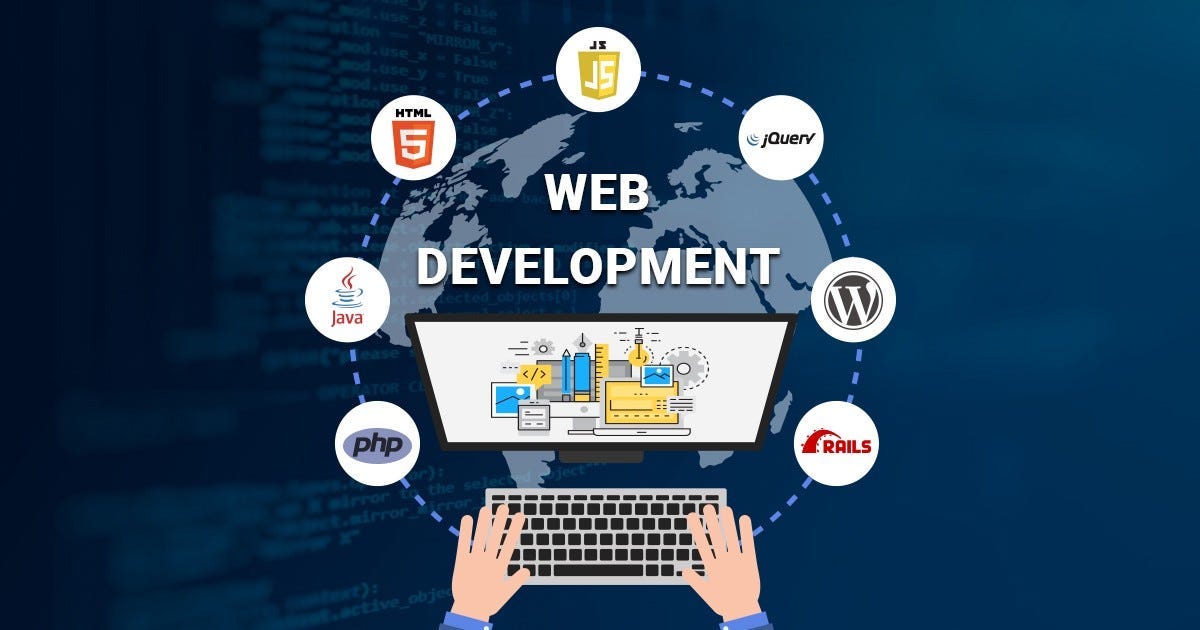Web development is a dynamic and fast-evolving field that powers the modern internet. Whether you are browsing an e-commerce store, reading an article, or using a social media platform, web development is behind it all. From creating simple static websites to complex web applications, web development plays a critical role in shaping the digital experiences we interact with daily.
This guide will introduce you to the basics of web development, the various technologies involved, and the career opportunities available in this ever-growing field.
What is Web Development?
Web development refers to the process of building and maintaining websites and web applications that run online via browsers. It involves several tasks, including coding, designing, and managing the website’s performance, user experience, and security.
Web development is generally divided into two main categories:
- Frontend Development: The part of the website that users interact with (the user interface). It involves everything that a user sees and experiences, such as layouts, buttons, and text.
- Backend Development: The server-side operations that make the website function properly behind the scenes. It involves database management, server configuration, and application logic.
In addition to these, full-stack developers handle both the front and back end, creating a complete web experience from start to finish.
Key Technologies in Web Development
Several core technologies power web development, each playing a vital role in the creation of websites and web applications.
1. HTML (Hypertext Markup Language)
HTML is the foundational language of the web, used to structure content on a web page. It defines elements like headings, paragraphs, links, and images. Without HTML, web browsers wouldn’t know how to display the information on the internet.
2. CSS (Cascading Style Sheets)
CSS is used to control the presentation of HTML elements on a web page. It allows developers to define styles such as colors, fonts, spacing, and layout, ensuring that the website looks attractive and is easy to navigate.
3. JavaScript
JavaScript is a programming language used to add interactivity to websites. It enables dynamic content like sliders, forms, animations, and real-time updates. JavaScript, along with HTML and CSS, forms the core of frontend development.
4. Backend Languages
Backend languages power the server-side logic of websites. Common backend programming languages include:
- Python: Known for its simplicity and versatility.
- PHP: Widely used in web development for server-side scripting.
- Ruby: Popular for building web applications.
- Java: Known for its robustness and scalability.
- Node.js: A runtime environment that allows JavaScript to be used for backend development.
5. Databases
Websites and applications often need to store and retrieve data, which is where databases come in. Popular databases include:
- MySQL: An open-source relational database.
- MongoDB: A NoSQL database known for flexibility in handling unstructured data.
- PostgreSQL: An advanced open-source database system.
6. Frameworks and Libraries
Frameworks and libraries streamline development by providing pre-written code, tools, and best practices. Some common ones include:
- React: A JavaScript library for building user interfaces, particularly single-page applications.
- Angular: A framework maintained by Google for building dynamic web applications.
- Django: A high-level Python framework for backend development.
- Ruby on Rails: A framework written in Ruby that emphasizes convention over configuration.
7. Version Control Systems
Version control systems like Git help developers track changes to their code, collaborate with team members, and revert to previous versions if necessary. Platforms like GitHub and GitLab are popular for hosting and sharing code repositories.
The Web Development Process
Developing a website involves several steps, from planning and designing to coding and testing. Here’s a breakdown of the typical web development process:
1. Planning and Research
The first step is to understand the project’s requirements, goals, and target audience. This phase involves researching competitors, gathering user feedback, and planning the website’s structure and features.
2. Designing
Once the plan is in place, the design phase begins. Designers create wireframes, mockups, and prototypes to visualize how the website will look and function. Tools like Adobe XD, Figma, and Sketch are commonly used for web design.
3. Development
In the development phase, developers write the code that brings the website to life. Frontend developers focus on implementing the design using HTML, CSS, and JavaScript, while backend developers set up the server, database, and application logic.
4. Testing
Testing ensures that the website functions as intended and is free of bugs. Developers and quality assurance teams test for issues like broken links, slow load times, security vulnerabilities, and compatibility with different browsers and devices.
5. Deployment
Once the website has been tested and approved, it is deployed to a web server where it becomes accessible to users. This phase involves configuring the server, setting up databases, and ensuring that the website is optimized for performance.
6. Maintenance and Updates
Web development doesn’t stop at deployment. Regular updates, performance monitoring, and security patches are necessary to keep the website running smoothly and up to date with the latest web standards.
Careers in Web Development
Web development offers a wide range of career opportunities, with demand for skilled developers continuing to grow. Some popular job roles in the field include:
- Frontend Developer: Specializes in building the user-facing part of websites.
- Backend Developer: Focuses on server-side logic, databases, and application functionality.
- Full-Stack Developer: Handles both frontend and backend development.
- Web Designer: Focuses on the aesthetics and user experience of websites.
- DevOps Engineer: Manages the infrastructure and deployment processes for web applications.
- Web Project Manager: Oversees the entire development process, ensuring projects are completed on time and within budget.
With the rise of remote work and freelancing, web developers also have the flexibility to work for companies worldwide or take on freelance projects.
The Future of Web Development
Web development is constantly evolving with new technologies and trends shaping the future of the web. Some emerging trends include:
- Progressive Web Apps (PWAs): Blurring the lines between websites and mobile apps, PWAs provide a fast, app-like experience within the browser.
- Voice-Activated Interfaces: Voice search and voice-activated web interactions are growing in popularity, driven by the rise of digital assistants like Alexa and Siri.
- Artificial Intelligence (AI) and Chatbots: AI-powered chatbots are becoming more common, enhancing customer service and user engagement on websites.
- WebAssembly: WebAssembly is a low-level programming language that allows developers to run high-performance code in web browsers, improving the performance of web applications.
Conclusion
Web development is the backbone of the modern internet, powering websites and applications that billions of people use daily. It’s an exciting field that offers endless opportunities for creativity, problem-solving, and career growth. Whether you’re interested in building visually stunning websites or developing complex server-side logic, web development has something for everyone. As technology continues to evolve, the possibilities in web development will only expand, making it an exciting and rewarding field to be a part of.









